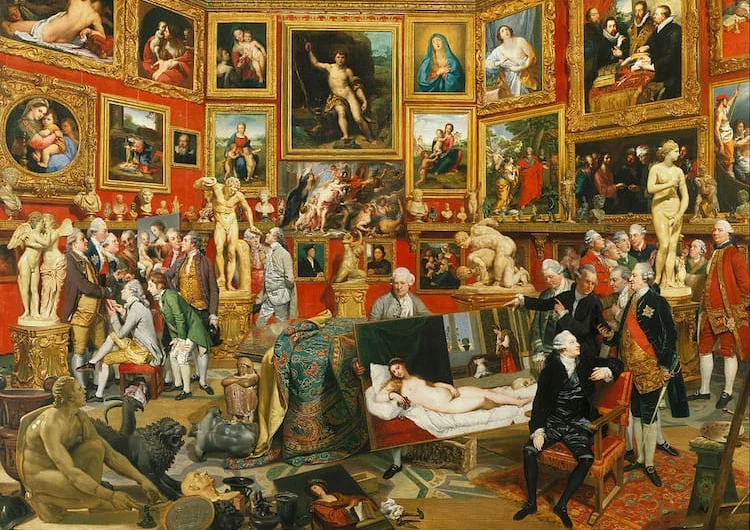How old is the mermaid myth?
Edward Burne-Jones, British (1833 - 1898)
A Sea-Nymph, c. 1881
Oil on canvas
Minneapolis Institute of Art
For thousands of years, the legends and symbols of fish-tailed woman, called mermaids, have captured the imagination of everyone.
“Mermaid” comes from old english mĕre “deep and marshy lake or ocean” and maiden that means virgin girl.
The mermaid appears in folklore from all over the world, including Europe, the Middle East, the Caribbean, West and Central Africa, and Japan. Accordingly to such a wide geographical range, the mermaid has many variations in symbolic and mythological meaning. And the meanings have changed with time. Some mermaid species are dangerous while others are benevolent and may grant the wishes of those who see them.
Mermaids Throughout the Ages
Babylonian culture (1900 to 539 BC)
The fish god Adapa also known as Oannes goes back to the Kassite period (14th century BC in Babylonia). Oannes is one of the "seven sages" of the Ancient Near East . He became the major god of the seafaring Philistines (12th – 8th century BC) under the name Dagon.
Assyrian Fish God Dagon.
Hand carved pendant by Vis a Vis Jewelry.
He spent his nights in the waters of the gulf Persia, but he would come out of the waters during the day to give instruction in writing, the arts and the various sciences to the people, until that time steeped in ignorance and barbarism.
Early images of Oannes show him as a man wrapped in a fish cloak, but later the image evolved into the half-man, half-fish form in which he became more widely known. Small figurines of the fishman or merman were often used as protective talismans.
Bas-relief from the palace of the Assyrian king Sargon II (721-705 BC) presumably showing “Oannes”. Louvre, Paris
Aramaic (Syriac) culture (1100 BC – 700 AD)
The Arameans were a semi-nomadic and pastoralist people who originated in what is now modern Syria during the Late Bronze Age and the Iron Age.
The Aramaic goddess Atargatis is popularly described as the mermaid-goddess because she was depicted with a fish tail. However, that is not her common appearance. Atargatis is generally described as the "fish-goddess" and was the goddess of creation and fertility, beside other functions, considered to be the main goddess worshipped in ancient Syria.
Depiction of the goddess Atargatis on silver tetradrachm coin
Etruscan mythology (800 BC – 100 BC)
Etruscans (a civilization of ancient Italy) practiced a passionate sea-god cult. The cult was manifested in the sea-god Scylla, who also represented the god of the underworld. Scylla was commonly illustrated with two fish tails.
Etruscan tomb with a double-tailed Scylla swishing an oar. Tarquinia, Museo Nazionale, 2nd century
Figures of the double-tailed Scylla are common on Etruscan tombs, sarcophagus and urns because many Etruscans believed that the journey to the underworld involved a dangerous sea voyage. The Etruscan Scyllas are pictured frontal, with the tails spread out and sometimes rising to each side. The split fish tail was a depiction of fertility.
There are rare presentations of female sea creatures with one fish tail which might represent Scylla or other sea creatures.
Etruscan Mermaid Necklace hand carved by Vis a vis Jewelry
Greek mythology (800 to 146 BC)
The only true fish/human hybrid race in Greek mythology was the Tritons created by the sea god Triton son of Poseidon and Amphitrite whose both had full human bodies.
Triton money clip by Vis a Vis Jewelry
However mermaids have been confused with the dangerous bird sirens in Homer’s Odyssey who ensnared sailors with their enchanting voices and lured them to watery deaths.
In Homer's Odyssey, a Greek epic dating to at least 800 BC, the hero Ulysses ties himself to the mast of his ship so he can resist the sirens during his voyage. The three sirens are described by Homer as birds with female human heads and torso: Parethenope, Ligea og Leukosia. The sirens were related to the Egyptian goddess Ra, or soul birds, demons of death sent to catch souls.
Odysseus and the Sirens, eponymous vase of the Siren Painter
c. 480–470 BC, (British Museum)
But the Sirens eventually became synonymous with mermaids; thus the mermaids acquired their unpleasant reputation for drowning sailors.

Odysseus and the Sirens by Herbert James Draper, c. 1909
References:



























